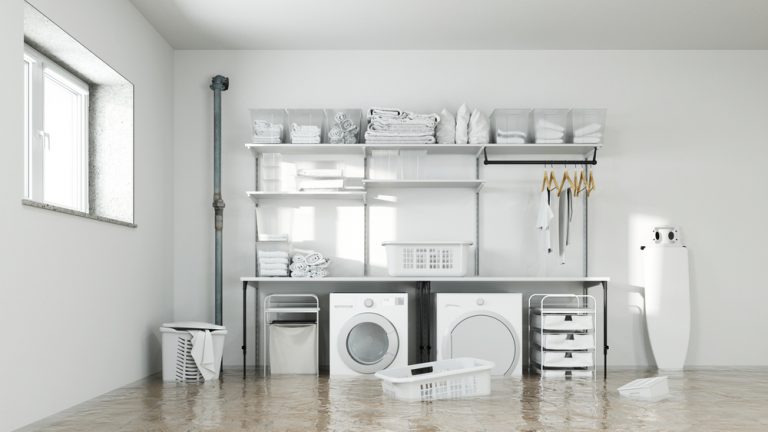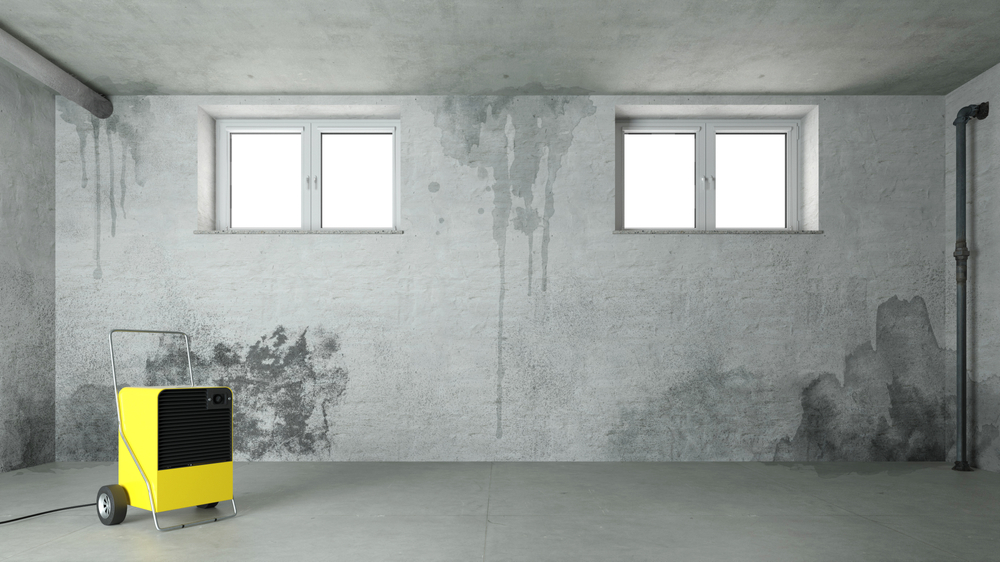A flooded basement can be a huge problem!
Not only are you facing water damage and mold growth, but there are also long-term effects associated with water damage to your home.
This is why basement flooding protection is key to avoiding this whole mess in the first place! Between heavy rain and sewage backups, there are steps you can take to prevent a flooded basement.
Here at Peak Sewer & Underground Services, our team knows plumbing and we are here to help you assess the causes of basement flooding and correct issues to prevent flooding altogether.
We would rather help you get ahead of any potential issues instead of watching you deal with the stress of a flood aftermath.
Keep reading to learn more about how to prevent a flooded basement:
How to Stop Basement Flooding During Heavy Rain
With heavy rain comes the risk of having your basement flood – even if it’s never happened before!
The best way to stop your basement from flooding during heavy rain is to invest in a sump pump installation.
Or, if you already have one, inspect the plug, battery, and system to ensure it is working properly.
Apart from a sump pump, here are some other tips to help you prevent basement flooding when the weather is particularly wet:
- Check your downspouts. You’ll want to make sure they are properly connected, free of debris, and draining at least two meters away from your home.
- If you have rain barrels, ensure that they are connected to catch rainwater and that the overflow house is pointed away from your home.
- Reduce your water use on rainy days to prevent the sewers from over-filling and flooding your basement.
- Take a look at the catch basins on your street. If they are covered in debris, take a few minutes to clear them.
One important tip you should follow is to check your sewer backwater valve. This valve ensures that if heavy rain does cause a sewage backup, nothing will access your basement and cause a flood.
How to Stop Sewage Backups In Your Home
Apart from heavy rain, your basement can also flood due to sewage backups, which are exactly as they sound: When sewage backs up into your home.
To ensure basement flooding protection and stop sewage backups, here are some tips you should follow:
- Don’t flush non-flushables down your toilet! These items include sanitary napkins, paper towels, diapers, and more. Over time, these non-flushable items will get stuck in your pipes and will lead to a sewage backup.
- Don’t pour grease down your drain. Even though it is a liquid, it will solidify once it cools and forms a grease layer that will cause a major clog.
- Check your pipes for signs of cracks or damage. Even sturdy materials like PVC won’t last forever, and a collapsed pipe will definitely cause flood damage to your home.
- Avoid planting trees and shrubs around your pipes. Their roots can penetrate older pipes and result in a sewer backup.
Sewer backups can also be caused by city sewer lines. A backup in the municipal system can cause a backup in your home as well.
When it comes to repairing damaged or clogged lines, the city is only responsible for the sewer line that starts at the main underground sewer pipe that carries wastewater to the city’s treatment plant.
The rest of the sewer line is the responsibility of the homeowner.
What is a Backwater Valve and How Does It Work?
A backwater valve is designed to ensure that flooding and sewage do not access your basement by only allowing water and sewage to flow one way.
There is a small slap inside of the valve that remains open to allow water to flow away from your home.
There is also a small floatation device inside the valve that causes the flap to lift up and close if water or sewage tries to flow the other way.
These devices are installed on your sewer line, whether you are building a new home or living in an existing one.
You can check to see if your home already has a backwater valve by taking a look around your basement.
They are typically located in the floor and have a round or rectangular cover that can be easily removed for maintenance purposes.
What is a Sump Pump and How Does It Work?
A sump pump is a piece of equipment that pumps water from your basement to the outside of your home.
This device sits in a hole that is usually carved below the main surface of your basement floor. This pit is known as a basin and houses the sump pump.
The pump itself is equipped with valves that will sense rising water levels or water pressure. When the water elevates too high, the sump pump will automatically kick in and pump excess water out of your basement and away from your property.
It pumps the water through a discharge or “effluent” line to a designated drainage area such as a dry well, pond, creek, or neighborhood drain.
When looking at a sump pump installation, you want to make sure that the water drains to an area where it cannot reenter your home.
There are also different types of sump pumps you can choose from, depending on your home and needs:
- Submersible Sump Pump: Submersible sump pumps contain both the pump and the motor in one unit. It sits submerged in the basin and is often quieter and clog less than sump pumps that are placed on a pedestal.
- Pedestal Sump Pump: Pedestal sump pumps have a separate pump and motor, with the motor sitting on a pedestal base above the basin. Keeping the motor above water can extend its lifespan, but it can be louder and take up more space.
- Battery-Operated Backup: Battery-operated backup sump pumps provide extra security in the event of a power outage or if your main pump stops working.
- Water-Powered Backup: These backup pumps require no batteries but do use additional water, which could affect your water bill.
When choosing a sump pump for your home, it’s important to choose one with appropriate horsepower.
A pump that is not powerful enough may not help prevent flooding in your basement. Alternatively, a pump with higher horsepower than necessary will cause cycling and shorten the lifespan of the pump.
Proper and Safe Cleanup After Basement Flooding
Basement floods are no fun. They can render your basement unusable, ruin your belongings, and create health and safety hazards.
No matter what causes your basement to flood, it’s important to approach the cleanup in a way that minimizes safety risks and damage to your home.
Here are the steps to properly and safely clean your basement following a flood:
Turn Off the Electricity
Never enter a flooded basement until you have turned off the electricity!
Appliances, devices, and outlets in your basement can pose a risk of electrical shock when they come into contact with water.
If you can’t safely access your electrical panel, call a licensed electrician.
Remove the Water and Wet Items
The next step in flood cleanup is to remove the water so you can assess the damage and begin repairs.
Check to see if your sump pump is working. If it is, it can be used to help pump water out of your basement. Otherwise, you may have to acquire a pump, mops, and towels.
If there are more than two feet of standing water in your basement, however, you may need the help of a professional.
Once the water is gone, clear out any wet items so you can effectively dry your basement and prevent mold growth.
Dry the Basement
This is a key step in flood cleanup! You’ll want to ensure your basement is completely dry to prevent mold growth.
It’s recommended that you use industrial fans and flowers to ensure that the entire basement dries properly.
If you don’t have these on hand, you can contact a local restoration company or hardware store to see if they offer rental units.
You can also use a dehumidifier to help get rid of moisture in the floors and walls.
Be sure to check any cracks around your basement and signs of water damage in your walls. Moisture can cause condensation in small spaces, so cracks should be sealed to prevent the growth of mold.
Deal With the Mold
We know we keep talking about mold, but it goes without saying that mold is a flooding issue that needs to be taken seriously!
Flooded basements are the perfect breeding grounds for mold, which can cause health issues for you and your family.
Once your basement is dry, make sure that everything is clean. Use soap and warm water to clean your floors and walls thoroughly.
Check your basement every day for signs of mold, and use bleach and water to clean any you find.
In some cases, you may need to remove and replace portions of your basement due to water damage that cannot be cleaned.
Signs of Water Damage in a Home
During and after the basement flood cleanup, it’s important to look out for signs of water damage to your home. If not repaired in time, they can cause severe damage to your house.
Here are some signs you should look (or smell) for:
- Musty Odors: A strong musty smell indicates mold growth or a leak in your sewer drains.
- Dampness: If your HVAC system is working, but you notice your home is particularly damp or humid, there could be water damage.
- Cracked or Flaked Paint: Water leaking within your walls will make its way to the wall’s surface and accumulate under the paint. You may notice cracking, flaking, or bubbling of the paint.
- Dirty Spots on Wall: Another indication that there is water damage to your walls is a dirty or stained spot.
Your health can also be a sign of water damage in your home! The sudden onset of respiratory issues (trouble breathing, asthma, allergies, etc.) may be caused by mold growth in your home.
Even if your basement looks “clean” following a flood, be sure to keep your eyes open for signs of any additional water damage that needs to be addressed.
The Long-Term Impact of Flooding In Your Home
While it is possible to clean up a flooded basement and repair this area of your home, it’s important to consider that there are some long-term effects flooding can have on your home.
Flooding in your home can seep into your flooring, walls, and insulation. This can cause mold growth that is difficult to clear out.
Flooding can also impact the value of your home as well as cause issues with your home’s electrical systems and overall structure.
In the end, no one wants to deal with a basement flood. Dealing with the damage and cleanup is stressful and time-consuming – and many people who experience basement floods fear that another will occur.
This is why taking preventative measures to ensure basement floods do not happen in your home is crucial to protecting your home, your health, and your well-being!
Expert Plumbing Services Available 24-7
At Peak Sewer, we know that basement floods can be an absolute nightmare – but we also know that the more quickly you deal with the issue, the less damage and devastation you will face.
Our team of expert technicians can assess the cause of flooding and correct the issues to prevent basement flooding from happening in the future.
We are available 24-7 to address all of your emergency plumbing needs!
Peak Sewer’s qualified techs can also inspect your plumbing and make changes to your system to ensure that your basement never floods.
Who else can offer that peace of mind?
Contact us to book your appointment or for more information to get started.


